 I don’t plan to visit “Garry Winogrand,” the internationally touring exhibition currently at the Metropolitan Museum (June 27–September 21, 2014). As a critic, historian, and theorist, I make it a policy not to opine about unredacted work, which comprises over 50 percent of this exhibition. What Leo Rubinfien, Susan Kismaric, and a gaggle of Winogrand acolytes find of interest on Garry Winogrand’s contact sheets — including many at which Winogrand never bothered to glance, and some for rolls of film he exposed but never developed while alive — I consider irrelevant. As a sometime curator, I refuse on principle to rethink a photographer’s body of work by delving into the leavings.
I don’t plan to visit “Garry Winogrand,” the internationally touring exhibition currently at the Metropolitan Museum (June 27–September 21, 2014). As a critic, historian, and theorist, I make it a policy not to opine about unredacted work, which comprises over 50 percent of this exhibition. What Leo Rubinfien, Susan Kismaric, and a gaggle of Winogrand acolytes find of interest on Garry Winogrand’s contact sheets — including many at which Winogrand never bothered to glance, and some for rolls of film he exposed but never developed while alive — I consider irrelevant. As a sometime curator, I refuse on principle to rethink a photographer’s body of work by delving into the leavings.
However, I reviewed a comparable exhibition, the last major Winogrand retrospective, also a touring extravaganza, curated by John Szarkowski in 1988: “Garry Winogrand: Figments from the Real World.” At that time, I didn’t normally draft exhibition or book reviews on spec — that is, without an assignment from an editor. However, that summer I’d published a carefully considered position paper on the question of the body of work in photography — which includes the only definition thereof ever issued, to the best of my knowledge. (It appeared in the June 1988 issue of Photo Communiqué, a Canadian journal, titled “On Redaction: Heaps and Wholes, or, Who Empties the Circular File?” You can find it in my 1998 book Depth of Field.)
Here was a chance to apply my definition to a specific curatorial project. I couldn’t resist. So I wrote the review, submitting it to the Arts & Culture editor of the New York Observer, an emerging weekly newspaper I’d tracked since its debut earlier that year. They accepted it, asked for more, and a few months later I settled into a slot as their photography critic, occupying it until fall 1997.
I expect I’d have pretty much the same things to say today about Winogrand, and about the curatorial attitudes that underpin this latest elaborate effort to prove, as Rubinfien puts it so personally, “that Winogrand was not washed up in the years I had known him.” Thus I’ve decided to post here that review written almost exactly 26 years ago. It appeared in the August 1, 1988 issue of the Observer. You can also find it in my 1995 book Critical Focus: Photography in the International Image Community. — A. D. C.
•
“At Modern, Winogrand ‘Unedited'”
Late-night talk show host David Letterman has, perhaps unwittingly, made a significant contribution to media criticism. He has achieved this with the curious invention he has dubbed “MonkeyCam.” This is a small television camera (ah, the wonders of technology) strapped to a member of one of the lesser primate species, who is then set free in the studio during the taping of the show. Periodically, at Letterman’s signal, the folks at the control board switch to “MonkeyCam,” and there you have it: startling, vertiginously odd-angled glimpses from the monkey’s vantage point. It’s usually good for about three minutes and a couple of laughs.
Garry Winogrand (1928-1984) was nothing more nor less than still photography’s version of “MonkeyCam”: a restless, anxious primate with camera attached, constantly scanning — unaware of, unresponsible for and uninterested in the results.
The major traveling retrospective currently on view at the Museum of Modern Art (“Garry Winogrand: Figments from the Real World,” through August), along with its accompanying monograph, renders significant service to the photography community and the general audience. It forces all critics and observers of the medium to confront the corruption of meaningful discourse about photography, of which Winogrand’s proposed ascension to the pantheon is emblematic. And it serves as an eloquent demonstration of how unchecked curatorial ambition can not only seriously muddy the waters of a specific photographer’s work but can actually undermine the very idea of a “body of work” in photography. (Click here for a PDF of MoMA’s press release on the show.)
Garry Winogrand once described his approach to photography in these words: “You see something happening, and you bang away at it. Either you get what you saw or you get something else — and whichever is better you print.” No credo could be more self-indulgent or uncritical, especially since statistical probability is on the side of the small-camera photographer who “bangs away at it” — this is a very generous medium insofar as accident is concerned, surely the most generous of all the visual arts in that regard.
Winogrand, for example, delighted in working crowded, complex social situations — the streets of an urban commercial district, a livestock show and rodeo, a press conference, a publicity party. For a grab-shooter like him, these events were hog heaven; in such territory, potential “art photographs” — complicated, ambiguous, unresolved configurations of human interaction — are as plentiful as flies.
So, when John Szarkowski proclaims Winogrand to be “the central photographer of his generation,” he either issues a scathing denunciation of the current field or degrades the medium and insults its most dedicated practitioners, living and dead. For, in the texts which serve as wall labels for the show and which are elaborated further in the exhibit’s lavish accompanying monograph, Szarkowski admits that Winogrand had no large idea, that the work became redundant, collapsing in on itself toward the end. Indeed, he goes so far as to confess that the last seven years of Winogrand’s work — including roughly a third of a million negatives Winogrand never even bothered to edit — was a pointless waste.
This must be especially painful to Szarkowski, on several levels. Most poignantly, of course, Szarkowski and Winogrand were friends and, in the deepest sense, teammates — Winogrand exemplifying the praxis, Szarkowski providing the theory. On that personal level the sense of loss must be enormous, and one can only empathize with the curator’s impulse to erect this monument for a fallen comrade.
Furthermore, in his relation to post-World War Two photography Szarkowski’s reputation as a curator will (by his own decision) eventually stand or fall on his decades of sponsorial commitment to Winogrand, and he’s clearly on shaky ground. (Szarkowski’s public backing of Winogrand began with the 1967 “New Documents” exhibit, which also introduced Diane Arbus and Lee Friedlander to a wider audience. Since then, there have been three major shows — “The Animals” (1969-70), “Public Relations” (1977), and this retrospective, each accompanied by a MoMA-published monograph — making Winogrand a veritable house brand at the Modern.)
For another thing, his argument that Winogrand’s work embodies an expansive approach to the medium is belied by the work’s petering out in such ineffectual self-imitation. Szarkowski himself calls the later work “deeply flawed.” The “heroic” efforts to preserve Winogrand’s last, “unedited” work become, in retrospect, an embarrassment. (Those three hundred thousand-plus negatives were developed and contact-printed by Thomas Consilvio courtesy of a much-publicized grant from Springs Mills. On the occasion of the grant, Walter Elisha, chairman and chief executive officer of Springs Industries, said: ” … we felt it was important, in light of Winogrand’s prior record, to rescue this last of his work for study and evaluation. We felt the photography community would not want to risk losing what Garry Winogrand’s last work might say to all of us.”)
The real problem here is that Winogrand’s praxis — along with the theory that has sprung up around it, drafted by such photographer-critics as Ben Lifson, Leo Rubinfien, Tod Papageorge, and of course Szarkowski himself — is premised on what photographer-theorist Richard Kirstel, in an essay, has called “reverence for the intensity of the glimpse.” And, in the last analysis, the glimpse is simply an insufficient basis for the construction of an epic vision. It will do for lyric poetry — for a Kertész, a Doisneau, a Levitt — but not for those who think on epic scale: Edward Weston, Eugene Smith. Only Robert Frank ever built an epic on glimpses — and he managed that not by glimpsing better than other photographers, but by developing and maintaining a political stance (which Winogrand studiously avoided) and by painstakingly redacting his imagery into a spare, taut, book-length sequence.
Epic scale demands, among other things, the capacity for prolonged attention that Winogrand so clearly lacked. After all, how seriously are we to take the droppings of a gluttonous voyeur who spent the last seven years of his life producing a third of a million negatives without bothering to look at any of them, much less analyze them critically? This was not a photographer; this was a shooter, afflicted with a textbook case of terminal distraction, the quintessence if not the prototype of the dreaded “Hand With Five Fingers” you have surely seen in camera ads on TV.
It’s my guess that, at some time in the future, Winogrand’s main usefulness to the medium will be seen to have been his willingness to go down this dead-end path and explore it to the bitter end — so that no one needs to pass that way again.
•
[For a scrupulously noncommittal response to the issues raised above, see Arthur Lubow’s July 3, 2014 New York Times review of the current show, “Looking at Photos the Master Never Saw.” Hilarie M. Sheets runs him a close second in her March 27, 2013 ARTnews review, “Garry Winogrand: Rolls of a Lifetime.” — A. D. C.]


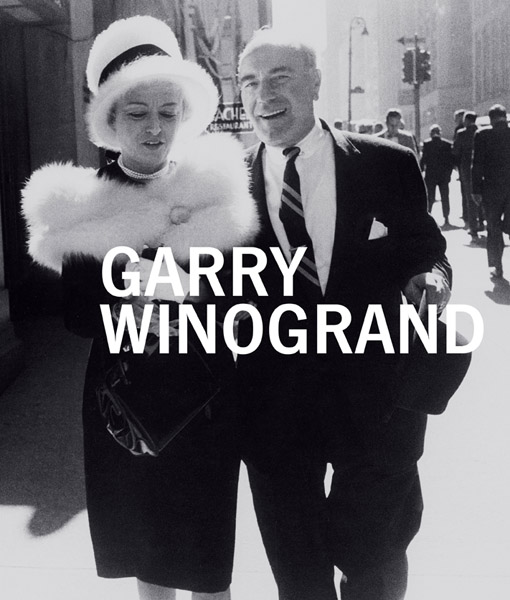
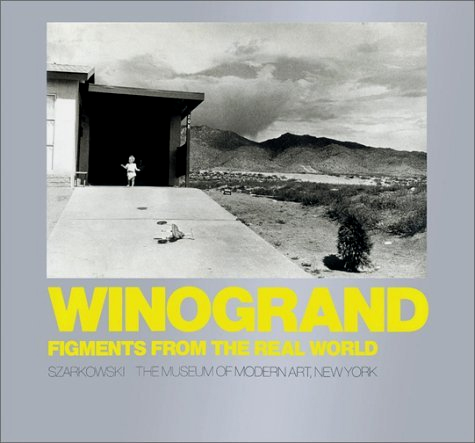

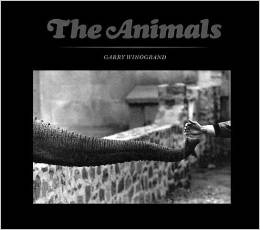
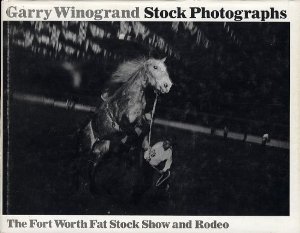
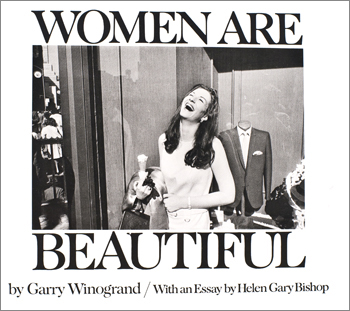
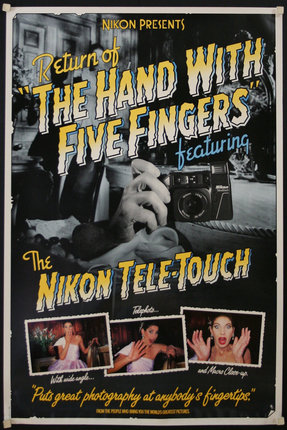




Will the situation ever change or improve?
JM
As I wrote in that 1998 essay on the body of work in photography, “There are surely more mulch heaps of imagery unredacted by their makers in photography than in any other visual art medium. And the unredacted heap has a peculiar attraction to certain types of curatorial and critical temperaments.”
Thus I predict that, if the situation does change, it will only be for the worse.
While I agree with your evaluation of Winogrand’s late work, and lack of merit of the glimpse, perse, I found some of his street shooting insightful in several ways. At their best they showed insights into street behavior, people’s relationship, and the comic values of well seen unintended relationships.
I was teaching at the same time he was at Texas, occasionally was at group lunches with him, and I found him an insufferable boor with horrible photographic working procedures. But his best pictures motivated and added insights to the work of my students. I did not favor their walking the streets with Leicas and 28 mm lenses the way his students imitated him.
Unredacted work? (Good word, just not in my dictionary.) Cartier-Bresson made the often missed statement that not only what you shot but you chose to present (much less than) what you shot. That would support your argument, but would that deny all the discussion of various troves from the past that had not been edited and presented by the photographer, for one recent example, Vivien Maier.
The recent show of Winogrand was enough to make anyone serious about photography gag, (saw it in SF). The poor printing alone was inexcusable.
As always you write a thoughtful critique and I am noting the questions you raised in my mind — not criticizing.
Thanks for your comments. You’re welcome to criticize when you feel so inclined.
Redaction is a synonym for editing, with a useful addition: “to select or adapt … for publication or release.” Choosing as I do to exclude unredacted work from my concerns does indeed mean that I won’t even formulate, much less publish, critical responses to the work of Vivian Maier, Francesca Woodman, and others, and to chunks of the output of Winogrand, Arbus, and assorted notables.
This doesn’t “deny all the discussion of various troves from the past.” It only means that, on principle, I don’t participate in those discussions. I can’t attend to everything, and am simply not interested in work whose maker didn’t prepare it for publication or exhibition. So I find this a useful line to draw. That doesn’t cause any problems, apparently; the world of photography seems to be getting along just fine without my analyses of and opinions on those undifferentiated heaps of images to which their makers never evinced any commitment.
I explain that decision at considerable length in the essay “On Redaction: Heaps and Wholes, or, Who Empties the Circular File?” in my 1998 book Depth of Field. Possibly useful for classroom discussion, if you still teach. This essay had as its primary purpose the definition of the concept of the “body of work” in photography — to the best of my knowledge, the only such definition ever offered by any critic, historian, theorist or teacher of photography. Feel free to argue with it, or to propose a reasoned alternative.